Atanarjuat: The Fast Runner
8.6 /10 1 Votes
90% Rotten Tomatoes Budget 1.96 million CAD Duration | 7.5/10 IMDb 91% Metacritic Genre Drama, Fantasy Country Canada | |||||||||||||||||||||||||||||||||
 | ||||||||||||||||||||||||||||||||||
Release date May 13, 2001 (Cannes premiere)February 1, 2002 (UK)April 12, 2002 (Canada)June 7, 2002 (USA, limited)August 22, 2002 (Australia) Writer Paul Apak Angilirq, Norman Cohn (additional writer), Zacharias Kunuk (additional writer), Herve Paniaq (additional writer), Pauloosie Qulitalik (additional writer) Initial release February 1, 2002 (United Kingdom) Cast (Atanarjuat), Sylvia Ivalu (Atuat), Peter-Henry Arnatsiaq (Oki), Lucy Tulugarjuk (Puja), Pakak Innuksuk (Amaqjuaq (as Pakkak Innushuk)), Madeline Piujuq Ivalu (Panikpak)Similar movies Deadbeat , Mad Max: Fury Road , John Wick , Knock Knock , Taken 3 , Run All Night | ||||||||||||||||||||||||||||||||||
Atanarjuat: The Fast Runner (Inuktitut syllabics: ᐊᑕᓈᕐᔪᐊᑦ (fonts required)) is a 2001 Canadian epic film directed by Inuit filmmaker Zacharias Kunuk and produced by his company Isuma Igloolik Productions. It was the first feature film ever to be written, directed and acted entirely in the Inuktitut language.
Contents
- Plot
- Atanarjuats family
- Okis family
- Others
- Development
- Filming
- Release
- Box office
- Critical reception
- Accolades
- References

Set in the ancient past, the film retells an Inuit legend passed down through centuries of oral tradition. It revolves around the title character, whose marriage with his two wives earns him the animosity of the son of the band leader, who kills Atanarjuat's brother and forces Atanarjuat to flee by foot.
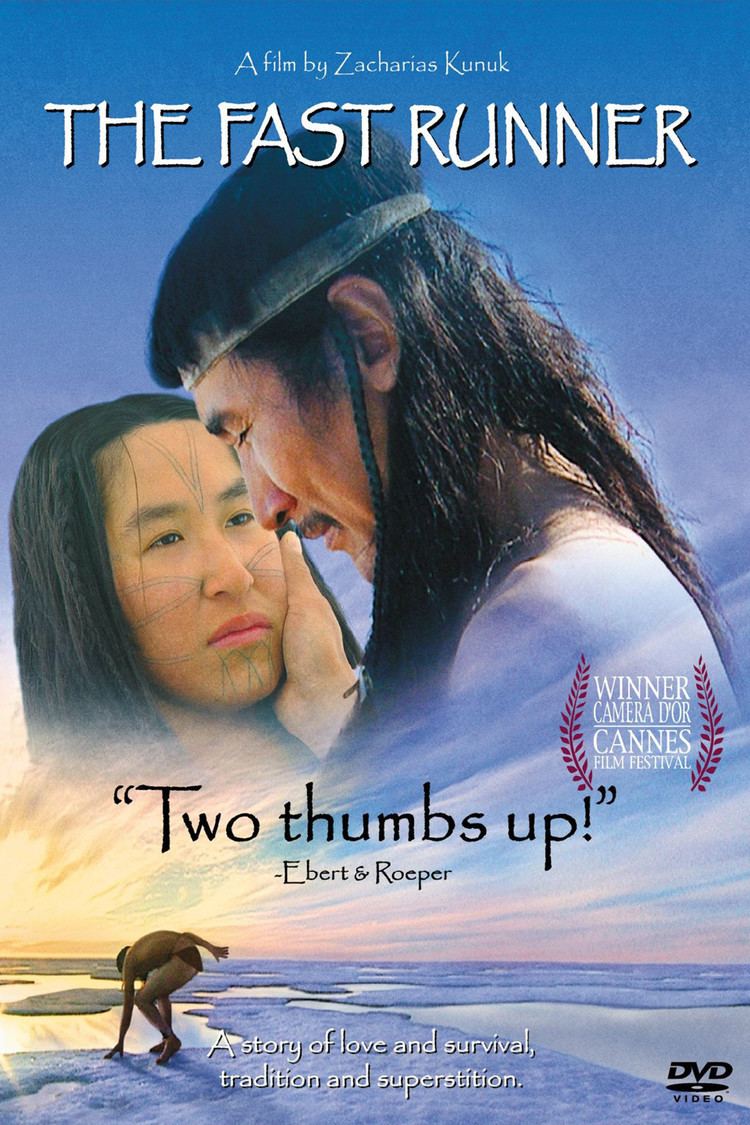
The film premiered at the 54th Cannes Film Festival in May 2001, and was released in Canada on 12 April 2002. A major critical success, Atanarjuat won the Caméra d'Or (Golden Camera) at Cannes, and six Genie Awards, including Best Motion Picture. Atanarjuat was also a commercial success, becoming Canada's top-grossing release of 2002, outperforming the mainstream comedy Men with Brooms. It grossed more than US$5 million worldwide. In 2015, a poll of filmmakers and critics in the Toronto International Film Festival named it the greatest Canadian film of all time.
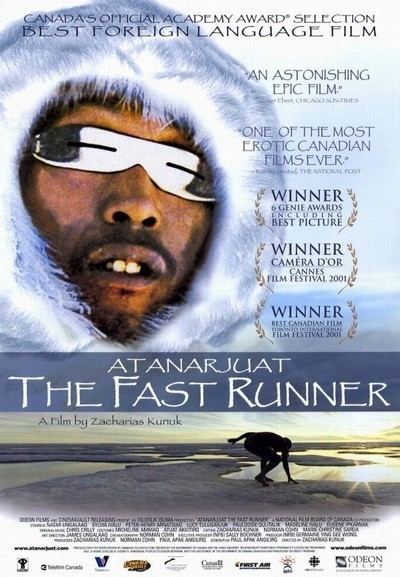
Plot
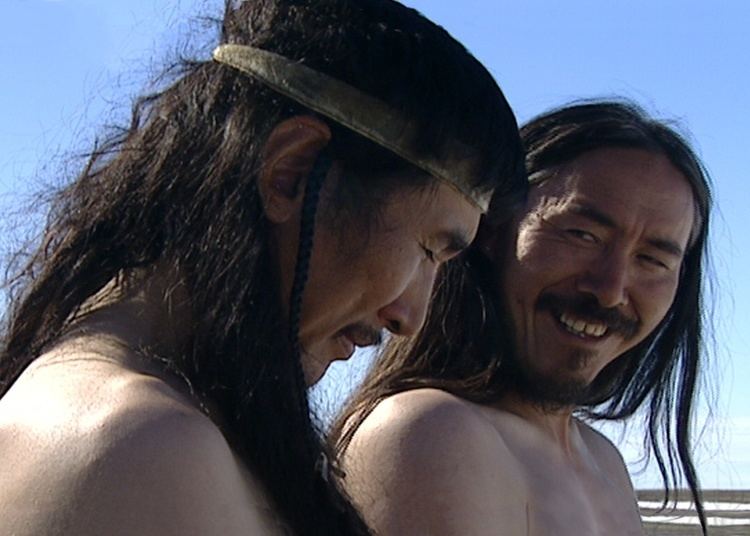
In Igloolik ("place of houses") in the Eastern Arctic wilderness at the dawn of the first millennium, Qulitalik bids goodbye to his sister Panikpak, wife of Kumaglak, promising to come if she calls for help in her heart. She gives him her husband's rabbit's foot for spiritual power. Qulitalik tells his sister, "Tulimaq is the one they'll go after now."
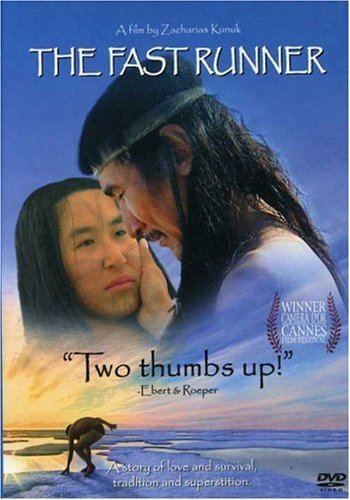
In a stone house, the camp leader Kumaglak falls over dead. A visitor removes the leader's walrus-tooth necklace from Kumaglak's body, and, passing by Tulimaq, he puts the necklace around the neck of Sauri, the son of the murdered leader Kumaglak, saying, "Be careful what you wish for." A shaman's curse has poisoned the camp. Tulimaq, now the local laughing stock, is having trouble feeding his family because of "bad luck" hunting. But Panikpak secretly brings meat for Tulimaq's children, Amaqjuaq and Atanarjuat, hoping that one day they will grow strong and be able to make things right. A few decades later, Tulimaq's sons Amaqjuaq and Atanarjuat are now young men and excellent hunters, and are disliked by camp leader Sauri and his son Oki. During a game of "wolf tag" at camp, Atanarjuat chases the beautiful Atuat, provoking jealous anger from Oki. Oki's sister Puja also openly shows her tender feelings for Atanarjuat. Oki's grandmother Panikpak does not want Atuat to marry Oki. In a duel, Atanarjuat wins the right to marry Atuat. Tulimaq tells Atanarjuat that he should leave to hunt caribou, and an elder suggests that Atanarjuat stop at Sauri's camp, joking about the women that he will find there. At Sauri's camp, Oki and Sauri suggest that he should take Puja to help with the hunt. At a waterfront camp, Atanarjuat and Puja pass the evening singing and flirting and eventually end up having sex.
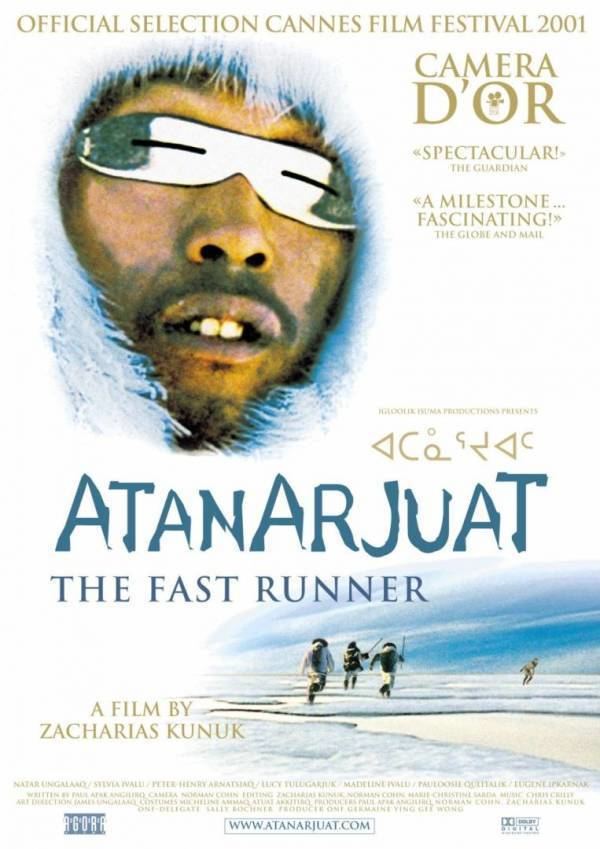
Later, Atanarjuat is in an unhappy marriage with two wives, Atuat and Puja, and has a young son by Atuat. Atuat and Amaqjuaq's wife Uluriaq complain that Puja is not helping with the daily work. Puja and Amaqjuaq are also having an affair. Puja apologizes, and suggests Atuat and Uluriaq leave to pick eggs, while Atanarjuat and Amaqjuaq retire to the tent to sleep. Alone outside the tent, Puja places a boot against the tent to indicate who is sleeping on that side. She leaves, and Oki and his two henchmen sneak up and plunge their spears through the tent wall, killing Amaqjuaq. Instantly, Atanarjuat, naked, barefoot, and unharmed, bursts out of the tent and runs off across the ice.
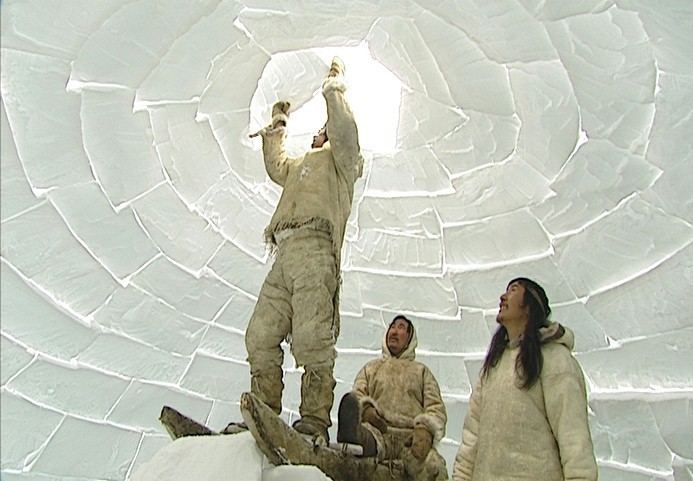
Oki and his two sidekicks give chase on foot, but Atanarjuat keeps well ahead of them, running steadily for miles. Freezing cold and with feet raw and bloody, he finally collapses. He wakes up wrapped in furs with Qulitalik and his family. Atanarjuat tells them he is being chased, and the daughter spots a sled team approaching. The family hide Atanarjuat under some dry seaweed. Oki and his brothers arrive, and the family profess to have seen no one. Back at Igloolik, Oki is angry because Sauri refuses to let him have Atuat. One day, while Atuat is spending time alone, Oki's henchmen grab her and pin her down while Oki rapes her. Later, Panikpak comes to Atuat to offer her comfort.
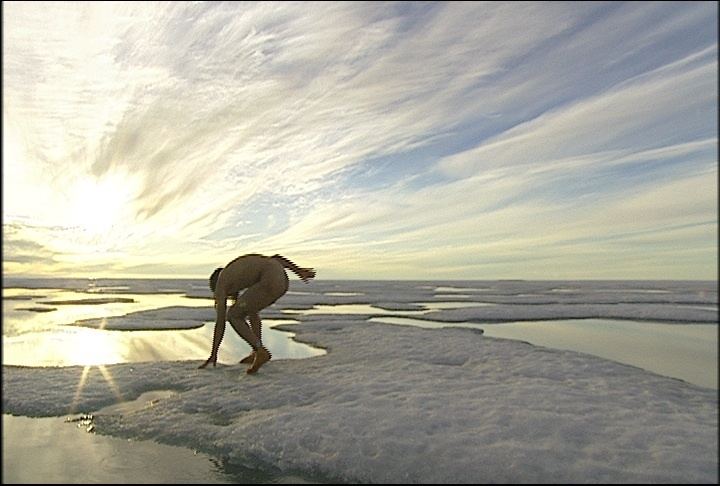
Winter has arrived again, and the ice is becoming solid. Atanarjuat, having healed with help from his rescuers, is impatient to return to Igloolik. In Igloolik, Oki approaches Sauri and stabs him in the stomach. Oki is now the camp leader. In her heart, Panikpak calls out to her brother Qulitalik to summon him supernaturally, as they agreed so long ago. Sensing his sister's call, Qulitalik tells his family that they will all go to Igloolik with Atanarjuat. Outside, Qulitalik performs a magic ritual using the rabbit's feet, and back at Igloolik Oki sees a rabbit in the snow that he is able to catch with his bare hands. When he eats the rabbit meat he falls under a spell that makes him forget all his grievances. Having made the long sled journey across the ice, Atanarjuat, Qulitalik, and the family approach Igloolik.
Atanarjuat arranges a confrontation with Oki and his brothers in an igloo whose floor he has covered with ice, and outside which he has secreted footpieces which enable him to stand and move while his enemies can't, and a weapon. Having demonstrated that he has the power to kill them, he exclaims "The killing stops here!"
With the community gathered that evening, Qulitalik calls forth the spirits. The evil shaman Tungajuaq appears, blowing and grunting with the eerie echo of a polar bear. Qulitalik places a carved pair of tusks in his mouth and confronts Tungajuaq with the powerful spirit of the walrus. Panikpak joins him, shaking the walrus tooth necklace. Feeling the force of their spiritual onslaught, the shaman backs up and disappears. Panikpak speaks to the gathered group, saying it is time for forgiveness. Oki and Puja and their friends are forgiven for their evil deeds, but are exiled from Igloolik.
Atanarjuat's family
Oki's family
Others
Development
The film is set in Igloolik ("place of houses") in the Eastern Arctic wilderness at the dawn of the first millennium, The names of Atanarjuat and his brother first appeared in writing in the journals of the explorer Captain George Lyon, who took part in a British expedition to search for the Northwest Passage in 1821–23. The Inuit believe the story of Atanarjuat to be more than five centuries old. This agrees with geomorphological estimates that Qikiqtaarjuk (Herschel Island), Inuktitut for little island and now a peninsula of Igloolik Island, on which much of the action occurs, became a peninsula about 500 years ago due to isostatic rebound. The main elements of the original story are that two brothers are betrayed by their wives and help set up a sneak attack. Rivals plunge their spears through the walls of the brothers' tent, but the fast runner makes an escape across the ice, naked and barefoot. After being rescued and healing, the fast runner sets up his own ambush and succeeds in killing his rivals. It was the first Inuktitut-language screenplay, and the project became the first feature film in Inuktitut.
Writer Paul Apak Angilirq, director Zacharias Kunuk, and many others on the production team had heard the Atanarjuat legend when they were young. Over the course of five years, Angilirq interviewed seven elders for their versions of the story and combined them into one treatment. The final script was developed by the team of Angilirq, Norman Cohn (producer and cinematographer), Kunuk, Herve Paniaq (tribal elder), and Pauloosie Qulitalik. Angilirq died due to cancer during film production in 1998.
Despite the emphasis on accuracy, the film takes liberties with the original Inuit myth: "At the film's core is a crucial lie", wrote Justin Shubow in The American Prospect, which is that the original legend ended in a revenge killing, whereas in the film Atanarjuat stops short of shedding blood. Kunuk felt this was "A message more fitting for our times", and agreed that it "probably" reflected the influence of Christianity and its concept of forgiveness on contemporary Inuit.
After Isuma applied to Telefilm Canada in spring 1998 for financial support, plans were made to begin filming in Igloolik, Nunavut in April. The month was important because April is typically the only time of year in Northern Canada when camera equipment could film winter scenes without malfunctioning due to cold. Kunuk found there was a lack of funding available from Telefilm and the Canadian government, which prioritized English and French-language productions over the languages of Aboriginal Peoples in Canada, and would not provide more than $100,000 for a film in an Aboriginal language, which would make Atanarjuat impossible. Kunuk regarded this as racial discrimination.
Due to difficulty with funding, Isuma instead successfully appealed for support of the National Film Board of Canada. Although the NFB had abandoned fiction, Isuma argued that in documenting Inuit mythology, Atanarjuat was similar to a documentary film. The budget was approved at $1.96 million.
Filming
Achieving historical accuracy was paramount to the production. According to anthropologist Bernard Saladin d'Anglure the biggest challenge was resurrecting the beliefs and practice of shamanism, "the major frame of reference for Inuit life". Research into historical sources — often the journals of European explorers — provided the basis for the reconstruction of clothes and customs. Elders were consulted. In an interview, Paul Apak Angilirq said:
The filming crew was 90% Inuit. Filming began in 1999, stretching from 3 p.m. to 3 a.m., given the sun was always up. Cohn used natural light in shooting with his Sony DVW 700 digital camera, avoiding switches from the automatic camera settings. The film production pumped more than $1.5 million into the local economy of Igloolik and employed about 60 people. Given the small population, everyone in Igloolik knew at least one crew member.
Kunuk explained how the crew set out:
The crew would costume the actors and apply make-up, only for the production to stall for four hours for ideal weather, which Kunuk said required the patience found in Inuit hunting.
Release
The film premiered at the Cannes Film Festival in May 2001. It was also screened at the Toronto International Film Festival in September 2001.
Its commercial release in Canada came on 12 April 2002, with the only bidder for distribution rights being Alliance Atlantis and its affiliate, Odeon Films. It had already been playing in France for seven weeks, and was on 83 screens. The film opened in New York City on 7 June 2002.
Box office
In the Greater Toronto Area, the film competed with the Canadian comedy Men with Brooms, which set box office records among English Canadian cinema. Atanarjuat became more enduring in the box office and became one of the highest grossing Canadian films to date.
By 7 November 2002, Atanarjuat grossed $1.1 million in Canada, with Odeon Films spokesman Mark Slone declaring this "an unqualified hit". In the U.S., it grossed $1.75 million by 11 July 2002. In France, it drew 200,000 admissions before the commercial Canadian release in April 2002. Its gross was higher than any Canadian film of 2002. The film finished its run on 30 January 2003 having grossed $3,789,952 in North America and $1,398,337 in other territories, for a worldwide total of $5,188,289.
Critical reception
Atanarjuat: The Fast Runner was praised by critics upon its release. Brian D. Johnson of Maclean's hailed it as a masterpiece and a landmark in international film, writing, "This movie doesn't just transport you to another world; it creates its own sense of time and space." In The Toronto Star, Peter Howell wrote the film overcame the stereotypes of the 1922 film Nanook of the North and "defines an epic in every way."
Roger Ebert from Chicago Sun-Times awarded it four stars, praising the film's acting, fleshed out characters, and direction, calling it "passion, filtered through ritual and memory". Peter Bradshaw from The Guardian praised the film's performances and cinematography, calling the film "A remarkable world first". Tom Dawson from BBC called the film "an impressively vivid and detailed depiction of a particular way of life", hailing the film's cinematography as "extraordinary". A.O. Scott from The New York Times praised the film, stating "Mr. Kunuk has accomplished the remarkable feat of endowing characters from an old folk tale with complicated psychological motives and responses. The combination of dramatic realism and archaic grandeur is irresistibly powerful". Marjorie Baumgarten from The Austin Chronicle complimented the film's script, cinematography, and visual style as being unique and refreshing. Leonard Maltin awarded the film four stars, calling it "A privileged peek into Inuit culture and a stirring, deeply personal drama".
The goals of the film were first to show how for thousands of years Inuit communities had survived and thrived in the Arctic, and second to introduce the new storytelling medium of film to help Inuit communities survive long into the future. Doug Alexander wrote in the Canadian historical magazine The Beaver that Atanarjuat "is an important step for an indigenous people who have, until recently, seen their culture recorded by outsiders". Jennifer L. Gauthier of CineAction wrote "Atanarjuat was made primarily for Inuit audiences so that they could see positive and accurate images of themselves on the screen". Director Kunuk put it a little more bluntly: "Four thousand years of oral history silenced by fifty years of priests, schools, and cable TV". He explained, "I first heard the story of Atanarjuat from my mother". "Kids all over Nunavut are playing Atanarjuat in the streets," said producer Norman Cohn in a 2002 interview. At one point the production company was considering making Atanarjuat action figures.
In 2004, critics and filmmakers in the Toronto International Film Festival named the film fifth in the Top 10 Canadian Films of All Time. In the next update in 2015, it placed first, prompting essayist Steve Gravestock to comment, "This is likely the first time that a film by an indigenous filmmaker has topped a poll of national cinema." The Nunatsiaq News heralded the choice as a sign Atanarjuat: The Fast Runner "has stood the test of time". However, Eric Moreault, writing for La Presse, dismissed Atanarjuat's first-place finish as nonsensical, noting Mon oncle Antoine topped all previous versions. On Rotten Tomatoes, the film has a positive 90% "Certified Fresh" based on 94 reviews, with an average rating of 8/10. The site's consensus reads, "Compelling human drama and stunning cinematography make The Fast Runner an absorbing experience". On Metacritic the film has a score of 91 out of 100 based on 29 critics indicating critical acclaim.
Accolades
The film won the Caméra d'Or at Cannes, the first time a Canadian film won the honour. Canadian historian George Melnyk interpreted this as a sign that "Canadian cinema has come of global age", also pointing to The Barbarian Invasions winning the Academy Award for Best Foreign Language Film. At the 22nd Genie Awards, Krista Uttak accepted the Award for Best Screenplay on behalf of her deceased father Paul Apak Angilirq.
Canada submitted Atanarjuat for consideration for the Academy Award for Best Foreign Language Film. It was one of the rare Canadian films not in French submitted for consideration, with The Necessities of Life in 2008 also containing a substantial amount of Inuktitut. Atanarjuat was not nominated.
References
Atanarjuat: The Fast Runner WikipediaAtanarjuat IMDbAtanarjuat Rotten TomatoesAtanarjuat MetacriticAtanarjuat: The Fast Runner themoviedb.org
